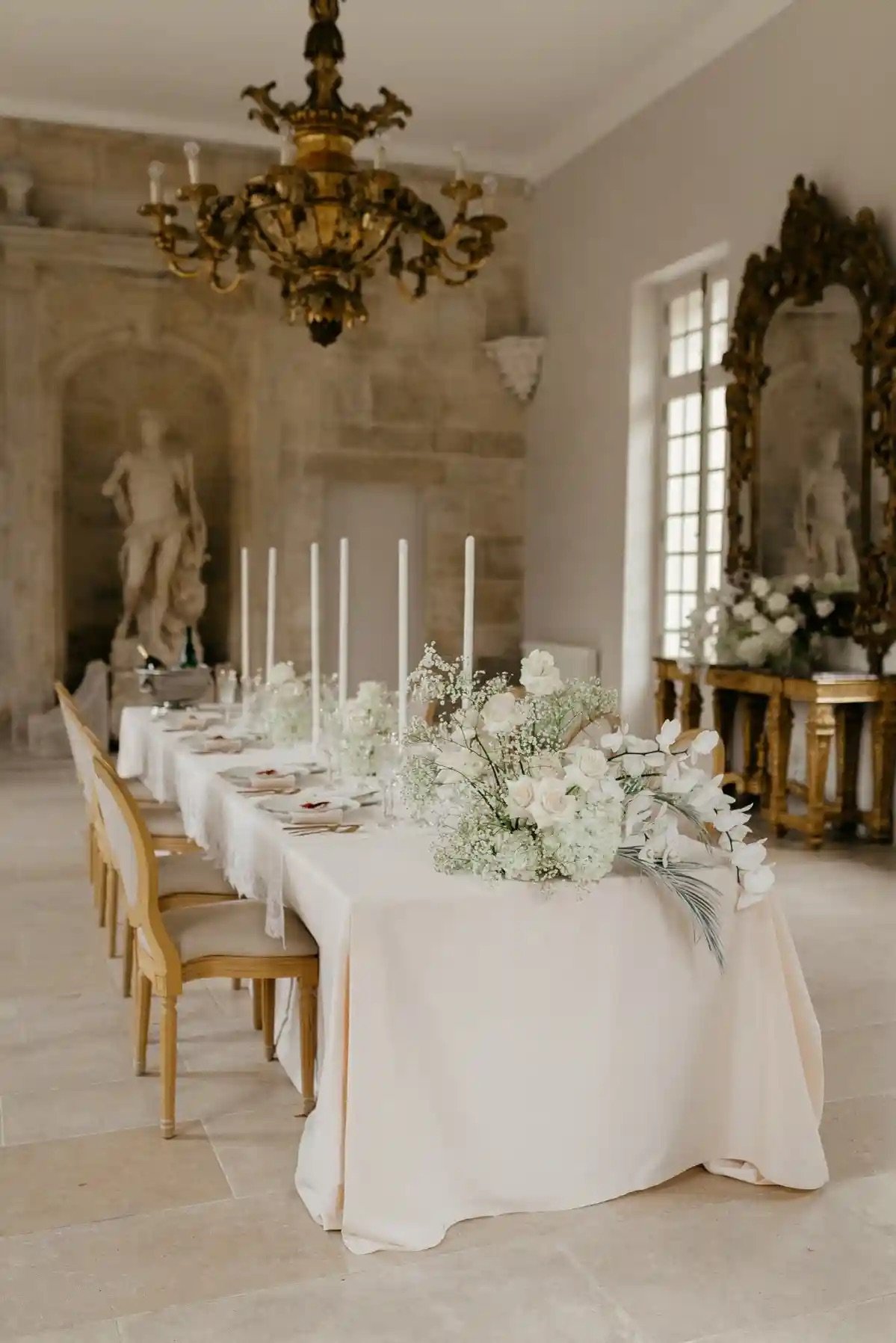How I Use Architecture to Design Unforgettable Weddings
As a wedding designer, I see every venue as more than just a location—it’s the starting point for a story. The arches, walls, and ceilings all speak, and my job is to listen. The best events don’t fight the venue’s design; they embrace it, elevating the space and creating a celebration that feels deeply rooted in its surroundings.
Over the years, I’ve had the privilege of designing weddings in some of the world’s most extraordinary spaces, from ornate French châteaux to sleek urban lofts. Here’s how I work with a venue’s architecture to create a one-of-a-kind event every time.
1. Highlighting What Makes the Venue Unique
Every venue has something that makes it special, whether it’s intricate moldings, grand staircases, or even industrial steel beams. I don’t believe in covering those elements up; I believe in amplifying them.
For example, when I worked in a historic European ballroom with gilded details and frescoes, I leaned into the elegance of the space. A soft ivory and gold palette complemented the room’s opulence without overpowering it. We used floral arrangements that echoed the curves of the plasterwork, and lighting that made guests look up to admire the painted ceiling.
In contrast, for a modern gallery with white walls and an open floor plan, I opted for sculptural floral arrangements and contemporary furniture that played up the clean lines. The space didn’t need “dressing up”—it needed thoughtful details that felt intentional.
2. Designing with Flow in Mind
Great design isn’t just about what guests see—it’s about how they experience the event. Architecture plays a huge role in creating that journey.
I often use a venue’s layout to guide guests through different moments of the day. For one wedding at an estate, the ceremony took place in an intimate walled garden. Guests then followed a path lined with lanterns to a courtyard for cocktails, and finally entered a grand dining hall for the reception. Each transition was seamless, with every space complementing the next.
A well-designed flow ensures that every corner of the venue gets its moment to shine. It’s about making the architecture part of the celebration rather than just the backdrop.
3. Layering to Add Depth
Layering is one of my favorite ways to bring out the personality of a venue. This could mean adding draping to soften a stark industrial space or introducing rich textures like velvet and brass in a castle with stone walls.
At one wedding in a centuries-old abbey, the walls and floors were made of cold gray stone. To warm the space, I brought in wooden tables, soft linen runners, and hundreds of flickering candles. The result was magical: the space retained its grandeur but felt intimate and inviting.
Photo by Through The Glass.
4. Balancing Contrast and Harmony
Sometimes, contrast is the key to making a venue unforgettable. I’ve worked in Mediterranean villas with sun-soaked walls and terracotta tiles where we introduced sleek black-and-white details for a modern edge. The unexpected juxtaposition made the event feel fresh without losing the character of the space.
That said, contrast needs to be handled with care. When a venue has iconic features—like stained-glass windows or a view of the Eiffel Tower—it’s often better to take a subtler approach. The space should lead, and the design should support.
5. Telling a Story Through the Space
Every couple has a story, and I see the venue as the stage where that story comes to life. One of my favorite projects was designing a wedding in an Art Deco theater. The couple loved old Hollywood glamour, so we used velvet drapes, gold accents, and a spotlighted stage for their ceremony. The space didn’t just set the tone; it became part of the narrative.
Whether it’s incorporating a couple’s cultural traditions or celebrating their shared love for modern art, I use the architecture as a guide. It’s about blending their story with the venue’s history, creating something truly unique.
The Secret to Transforming a Space
At the heart of my work is a deep respect for the venues I design in. Whether it’s a rustic barn or a grand château, the architecture is never something to overcome—it’s something to celebrate.
The most breathtaking weddings happen when the design feels like it belongs to the space, as if it couldn’t have happened anywhere else. By partnering with a venue’s architecture, I create events that aren’t just beautiful—they’re unforgettable.
So, if you’re choosing your wedding venue, take a closer look at its walls, windows, and details. They might just hold the key to your perfect day.


